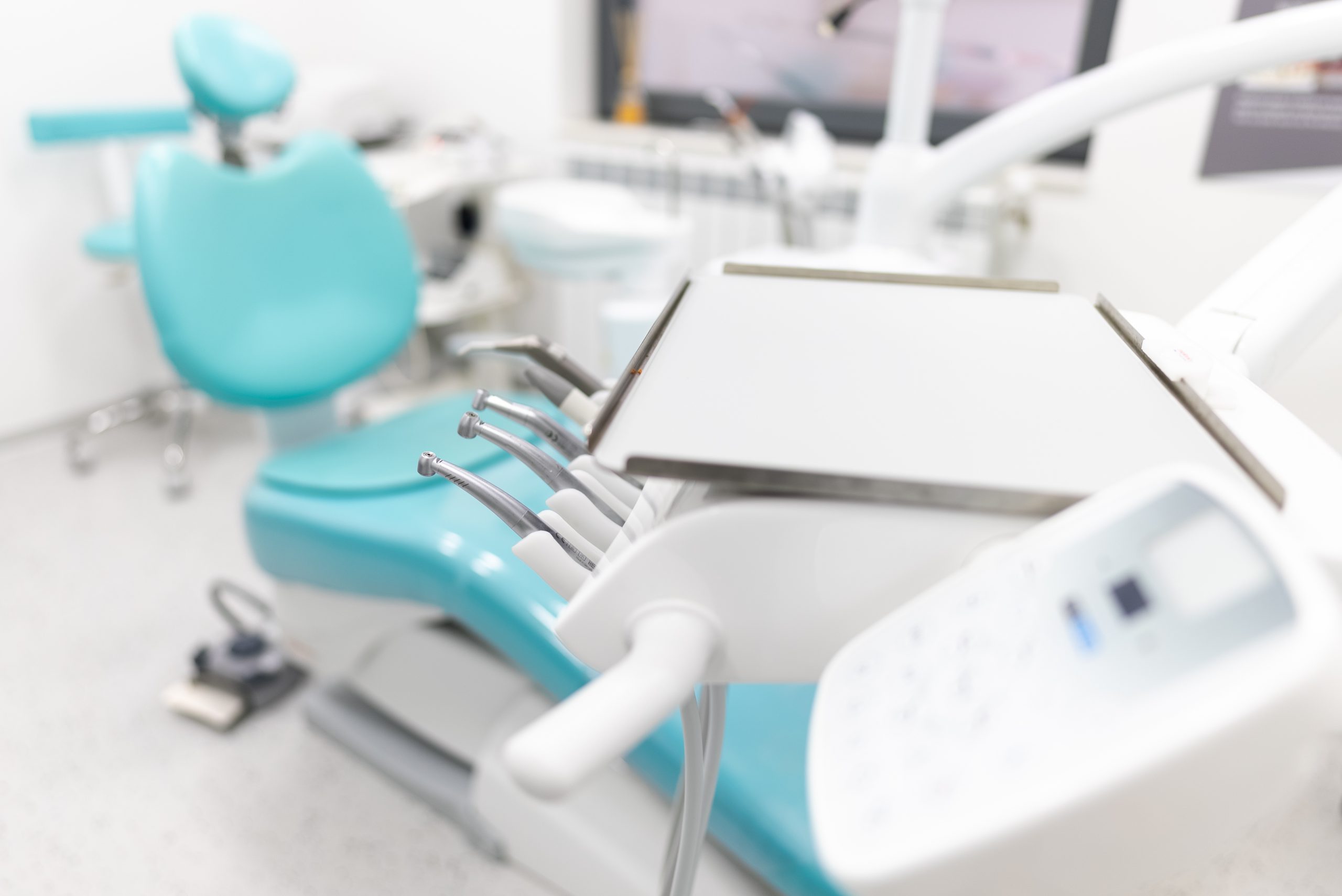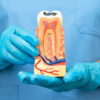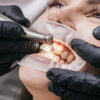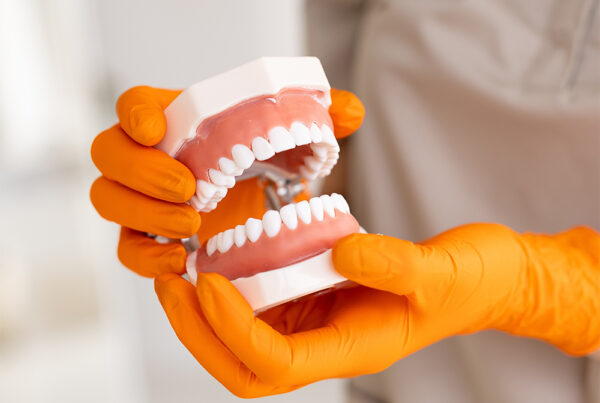Technology Of Dental Implant
Dental implants are a revolutionary form of tooth replacement that can restore your smile and improve your oral health. They offer many advantages over traditional treatments, such as bridges and dentures, including better stability, improved appearance, and increased durability. With the latest technological advances in dental implant surgery and treatment, these benefits have become even more pronounced. In this post, we’ll discuss the advantages of having a dental implant surgery and treatment with the latest technological advances.

The first advantage of having a dental implant surgery with the latest technology is improved accuracy. With traditional methods of placing dental implants, there was always a risk of misalignment or incorrect placement due to human error. However, with modern technologies such as computer-guided implant placement (CGI), dentists can now place implants with greater precision than ever before. CGI uses 3D imaging to accurately map out the jawbone and surrounding structures so that the dentist can place the implant precisely where it needs to be for optimal results. This helps reduce the risk of complications and ensures that your implant looks natural and functions properly.
Another advantage of having a dental implant surgery with the latest technology is shorter healing times. Traditional methods of placing implants could take months or even years for full healing due to bone grafting procedures that were often necessary prior to placement. With modern technologies such as laser-assisted soft tissue regeneration (LASER) or platelet-rich plasma (PRP) therapy, dentists can now stimulate bone growth at the site of implantation so that healing time is drastically reduced. This means you can get back to enjoying your life sooner rather than later!

The third advantage of having a dental implant surgery with the latest technology is improved aesthetics. With traditional methods of placing implants, there was always a risk that they would look unnatural or out-of-place in your mouth due to misalignment or incorrect placement. However, modern technologies such as CAD/CAM (computer-aided design/computer-aided manufacturing) allow dentists to create custom crowns that fit perfectly on top of each individual implant for an incredibly natural look that blends seamlessly into your smile.
Finally, another advantage of having a dental implant surgery with the latest technology is increased durability and longevity. Traditional methods used metal posts which were prone to corrosion over time which could lead to failure or infection in some cases. However, modern materials such as titanium are much more resistant to corrosion and wear which makes them much more durable than their predecessors and less likely to fail over time. This means you won’t have to worry about replacing your implants anytime soon!
In conclusion, there are many advantages associated with having a dental implant surgery and treatment with the latest technological advances including improved accuracy, shorter healing times, improved aesthetics, and increased durability and longevity. If you’re considering getting dental implants but are unsure if they’re right for you then speak to your dentist about what options are available using modern technologies so you can make an informed decision about what’s best for you!
Risks Of Having A Dental Implant Operation With Old Technology
As with any medical procedure, there are risks and potential disadvantages associated with having a dental implant operation with old technology. This post will discuss the potential dangers and disadvantages of having a dental implant operation with outdated technology.
- First, it is important to understand what is meant by “old technology” when it comes to dental implants. Old technology refers to implants that have been around for some time and may not be as advanced or efficient as newer models. These older implants may not provide the same level of stability or durability as newer models, which can lead to complications during the procedure or after the implant has been placed.
- One of the most common risks associated with having a dental implant operation with old technology is infection. Infection can occur if bacteria enters the area where the implant is being placed, leading to pain, swelling, and even bone loss in some cases. Additionally, if an infection does occur, it can be difficult to treat due to the age of the implant material and its lack of compatibility with modern antibiotics.
- Another risk associated with having a dental implant operation with old technology is nerve damage. Nerve damage can occur if an incorrect placement of the implant causes pressure on nearby nerves or tissue structures. This type of nerve damage can cause pain, numbness, tingling sensations, or even paralysis in extreme cases.

- In addition to these risks, there are also potential disadvantages associated with having a dental implant operation using outdated technology. For example, older implants may not provide as much stability as newer models due to their lack of strength and durability over time. This could lead to movement of the implant over time which could cause discomfort or even further damage if left untreated for too long. Additionally, older implants may not integrate properly into surrounding tissue structures which could lead to failure of the entire procedure over time.
- Finally, another disadvantage associated with having a dental implant operation using outdated technology is cost savings in terms of materials used for the procedure itself. Older implants tend to be cheaper than newer models due to their lower quality materials and production costs; however this cost savings may come at a price in terms of long-term success rates for the procedure itself due to their lower quality construction and materials used in production compared to more modern models available today.
- Overall, while there are potential advantages associated with having a dental implant operation using outdated technology such as cost savings on materials used for production; there are also several potential risks and disadvantages that should be taken into consideration before undergoing this type of procedure including infection risk from bacteria entering the area where the implant is being placed; nerve damage from incorrect placement; instability from lack of strength/durability over time; and failure rate due to improper integration into surrounding tissue structures over time due to inferior quality materials used in production compared to more modern models available today . As such it is important that patients considering this type of procedure weigh all options carefully before making any decisions about their oral health care needs in order ensure they receive optimal results from their treatment plan moving forward .
Frequently Asked Questions
What is 3D Printing Technology
3D printing technology is becoming increasingly popular in the dental implant industry, as it allows for more precise and accurate implant placement. With this technology, dentists can create custom-made implants that are tailored to the patient’s individual needs. The implants are created using a digital scan of the patient’s mouth, which is then used to create a 3D model of the implant. This model is then printed out using a special printer and then inserted into the patient’s mouth. This technology has allowed for greater accuracy and precision when placing dental implants, reducing complications and ensuring better outcomes for patients.
What Is Computer-Guided Implant Placement?
Computer-guided implant placement is another technological advancement that has been making waves in the dental implant industry. This technology uses computer software to guide dentists during the implant placement process, allowing them to place implants with greater accuracy and precision than ever before. The software takes into account factors such as jawbone density, size of teeth, and other anatomical features to determine where an implant should be placed for optimal results. This technology has allowed dentists to place implants more quickly and accurately than ever before, resulting in better outcomes for patients.
What Is CAD/CAM Technology?
CAD/CAM (Computer Aided Design/Computer Aided Manufacturing) technology is another technological advancement that has revolutionized the dental implant industry. This technology allows dentists to design custom-made dental implants using computer software and then have them manufactured using a specialized machine known as a milling machine or CNC (Computer Numerical Control). This technology allows dentists to create highly precise and accurate dental implants that are tailored specifically to each patient’s individual needs, resulting in better outcomes for patients overall.
What Is Laser Dentistry?
Laser dentistry is another technological advancement that has been gaining traction in recent years in the dental implant industry. Lasers are used during various stages of the implant placement process including bone preparation, soft tissue removal, and even post-operative healing processes such as wound healing stimulation or scar reduction treatments. Lasers allow for greater precision when performing these procedures which can lead to better outcomes for patients overall due to less pain or discomfort associated with traditional methods of treatment.
What Is Digital Imaging Technology?
Digital imaging technology is also being used increasingly in the dental implant industry as it allows dentists to get a more detailed view of their patient’s mouths prior to performing any procedures such as placing an implant or taking an impression for crowns or bridges work. Digital imaging can provide detailed images of teeth, gums, bone structure, nerve pathways etc. allowing dentists to make more informed decisions about treatment plans based on what they see on screen rather than relying solely on physical examinations alone. This type of imaging also helps reduce time spent on treatments since it eliminates any guesswork involved with traditional methods.







